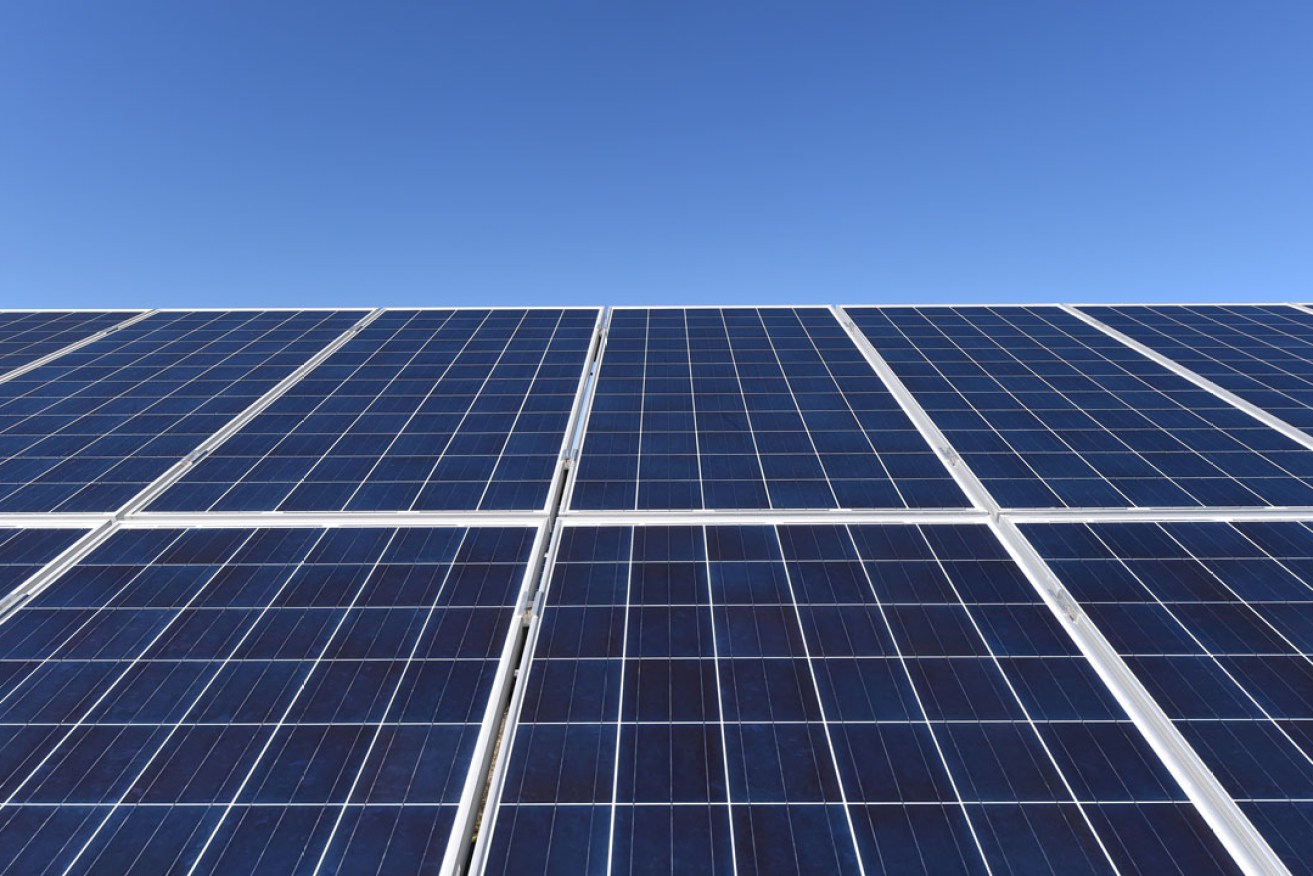You can’t half bake the renewable energy revolution
A fundamental rewrite of energy laws is needed to facilitate the transition to 100 per cent renewable power and tackle turmoil in the electricity market, writes Solar Citizens’ Claire O’Rourke.

Photo: AAP
The price of electricity in South Australia is a hot topic right now, leading to calls for an energy summit or an inquiry into renewable energy.
However, such a review would be helpful only if it examines fundamental changes to our energy rules which are currently holding us back from making the transition to 100 per cent renewables and the economic, equity, health and environmental benefits that will result from the shift.
South Australians are bracing for retail price hikes of $260 per year, representing an increase of 7-15 per cent on a typical yearly household electricity bill of $1700 to $2000.
Wind and solar power is being blamed for record high “spot prices” – the market in which retailers buy electricity from generators – with the price of electricity in SA soaring when the wind hasn’t been blowing and the sun hasn’t shone, leaving expensive gas plants to make up the shortfall in supply.
But what’s not widely understood is that the state has historically been very reliant on gas prices, and gas prices have recently skyrocketed. In fact, without South Australia’s wind farms, consumers would face even higher bills.
Private companies unilaterally shutting down gas power plants have exacerbated the situation. And there’s evidence that retailers are making more profits per customer in South Australia than elsewhere.
Australia doesn’t have a gas shortage problem, it has a gas export problem. In Japan right now they are paying less for Australian gas, even after the costs of export are added, than a family in the suburbs of Adelaide.
With that in mind, it is wise to reflect on this debate and who is saying what and why.
South Australia is on the frontline of an energy system in transition from fossil fuels to renewables. This is a shift occurring in many other parts of the world, and the State Government deserves congratulations for leading the nation in its push to promote clean energy.
What we need to do is get smarter about how we create and distribute energy
With the Federal Government showing no plan for renewable energy beyond 2020, it has been up to state and territory governments – including the ACT, South Australia, Queensland and, most recently, Victoria – to plan their own renewable energy transitions.
The challenges facing South Australia reveal that Australia’s system of energy trading is not up to the task in the age of renewable power and that a national approach is required. The concept of “baseload power” works well for fossil fuels like coal, but is threatened by cheaper, variable renewable energy sources like wind and solar.
Renewable energy can replace baseload and provide a reliable source of electricity. What we need to do is get smarter about how we create and distribute energy. Part of this demands prioritising investment in “dispatchable” renewables (ie, those which can be dispatched as required, such as the solar-battery power plant proposal for Roxby Downs revealed on the weekend, and the concentrated solar power plant proposal for Port Augusta announced last month), as well as storage systems such as pumped hydro, solar thermal and batteries, which can be quickly deployed to provide reliable power when necessary.
We need new rules to boost the uptake of distributed energy and storage such as home solar and batteries and microgrids.
Without these changes we are left to the whims of the market exploiting a turbulent transition, as we’re currently witnessing in South Australia, and it will be consumers and workers in the energy sector who bear the brunt.
The calls for an energy summit or inquiry are to welcomed as long as the terms of reference are broad and consumers are at the table.
What’s required is a fundamental rewrite of our energy laws in order to facilitate the transition to 100 per cent renewable power – a transition that is completely achievable, would save us $90 billion by 2050 (according to a Sydney University of Technology report), and would bring our energy system to a near-zero emissions scenario.
In short, you can’t half bake the renewable energy revolution.
The first law to re-write is the first law of our energy system, the National Energy Objective, or NEO. The NEO is an incredibly powerful rule. It is influential in determining everything from network tariffs to new generation build and, of course, this impacts on the price all Australians pay for electricity.
At the moment, this overriding principle serves the interests of the main energy players – the generators, networks and retailers. What the NEO should explicitly include is a commitment to a fair transition to a renewable future, underlining the goal to “Deliver an affordable, efficient, reliable, safe and fair electricity system powered by 100 per cent renewable energy”, as spelt out in Solar Citizens’ detailed, costed Homegrown Power Plan for achieving 100 per cent renewable power by 2030.
Consumers and business will be the winners from an energy system that’s safe, clean, reliable and affordable. This is what renewables can deliver in South Australia and across the nation, but only if we rewrite the rules that are holding back the transition.
Claire O’Rourke is national director of Solar Citizens, an independent, community-based organisation that seeks to increase and protect solar energy in Australia.




